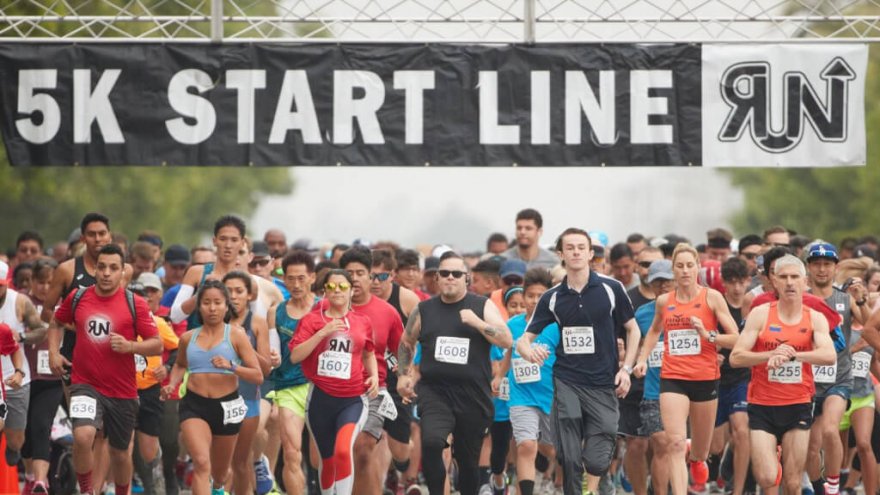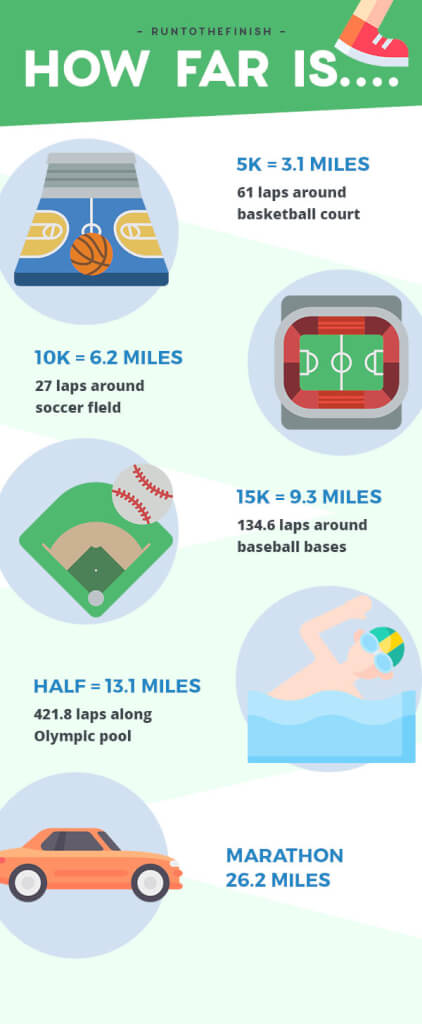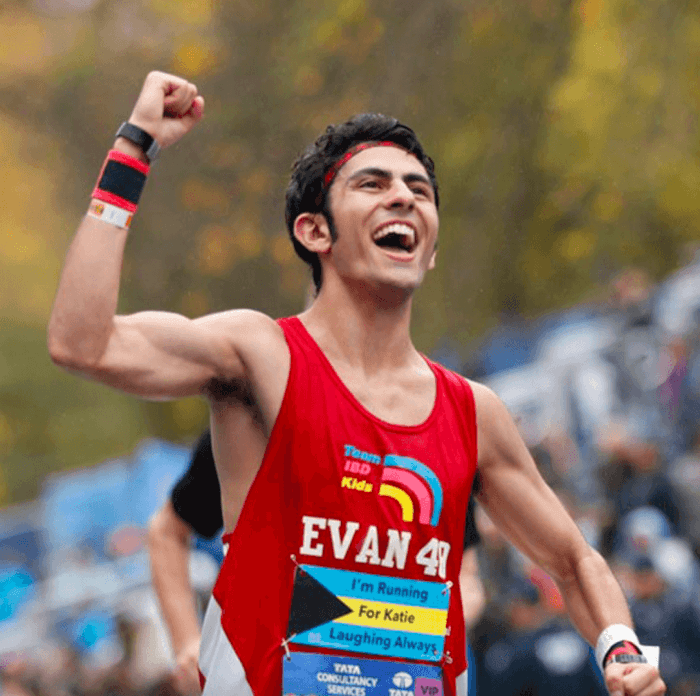The 5K: How Long Is A 5K & What To Expect About This Distance

One kilometer is approximately .62 of a mile. That means that a 5K in miles is 3.1 miles.
Long before I started running, I would occasionally hear a friend say that they had a 5K on the horizon. Often curious about this strange event, I began asking questions. I wasn’t even sure how far a K was.
New to running as an adult, I just decided to put on some sneakers and head out for a run one day. I have no idea how far I went that day. Long before inventions such as the smartwatch, I just went out planning to run for 20 minutes.
I jogged a little and walked some too. Unsure of where to go, I made quick decisions: left at this corner, two blocks, then hanging a right. The next thing I knew, I was home.
Do you know what else happened? The next thing I knew, I was hooked and I asked my running friends about signing up for a race.
How Many Miles is a 5K?
One kilometer is approximately .62 of a mile. That means a 5K race is 3.1 miles. Now that I am a runner, I am astonished when friends ask me, “How long was your 5K race?” Because the answer should always be 3.1 miles.
Since I am a race director, I do understand something that others may not: creating a course that is exactly 3.1 miles is not always easy.

Another thing to consider is that not everyone’s smart device tracks the distance exactly the same. Proof in point: on a Saturday group run, if you listen closely, you can hear the “beep” and “buzzing” going off at different times over the course of about a minute. That is because not all of our technology is completely in sync.
It is also true that if you don’t run the exact tangents that the race director mapped out, you could end up running a bit more or a bit less than a 5K.
However, the fact remains that the intention is for everyone to race 3.1 miles.
How to Train for a 5K
When determining how to train for a 5K, you need first to consider your starting point. If you are a non-runner, you will probably start out with a Couch to 5K program.
Someone doing C25K should just set themselves a goal to stay on track, complete the workouts (whether they are run/walk or both) and look forward to having fun on race day.
If you have been running for a while and are planning a 5K, you can approach things differently. While you do not have to have a 5K training plan, it will help you reach your goals.
If you are looking to make your own training plan, you should be running anywhere from 4 to 5 days each week. If you like to cross-train, be sure you give yourself one complete day of rest each week. One common mistake people make is not give their bodies adequate time to recover.
There are many training plans out there. A coaching great, Hal Higdon, offers many different types of training plans. This includes 5K plans for all caliber of athletes.
Essential Components to a Fast 5K
If you are hoping to clock a fast 5K, you need to accept something right now: it is going to hurt. When I ran my last 5K personal record (PR), it hurt a lot. My coach used to tell me you have to learn to lean into the pain if you want to race well.
What he meant is to acknowledge that it will hurt, embrace it, and keep moving into it. It’s the only way to get faster.
Key things to improving your time:
1. Core work: Consistently doing exercises to strengthen your core will help you improve.
2. Strength: Hitting the weight room to work on strength is another key way to get faster.
3. Speed work: The only way to get faster is to run faster. This means adding speed work to your regiment.
4. Mileage: Sure, you can race a half marathon with a long run of 10 miles. If you want to race a fast 5K, however, you need to run further than 3.1 miles during workouts. Get your long run-up to 5-6 miles once a week.
How To Race a 5K

I usually divide a 5K into thirds. The first third, I am getting in my groove. Trying not to go out either too fast or too conservatively. This is a distance you need to really focus on.
In the second portion of the race, I find myself really ratcheting down and going to work. The fatigue will start to kick in during the second mile. You have to work hard to keep the pace set at the beginning of the race.
The final mile is sheer guts, grit, and determination. It will hurt because it’s supposed to hurt. The burn in your lungs and ache in your side will get worse as you inch closer to the finish line.
The final .1 is where you just lay it all on the line as you finish strong and power to the end.
Some people love 5K because it is not very long. And if you are just heading out to run a 5K, it can be pretty easy. However, if you are really digging in and raining a 5K, nothing is easy about it.
Average 5K Time
Are you wondering if you are average in your 5K time? This chart is for male runners.
| Age | Beginner | Novice | Intermediate | Advanced | Elite | WR |
|---|---|---|---|---|---|---|
| 10 | 37:44:00 | 31:30:00 | 3:07 | 23:50 | 21:18 | 15:22 |
| 15 | 32:40:00 | 27:16:00 | 23:28 | 20:38 | 18:26 | 13:18 |
| 20 | 31:33:00 | 26:21:00 | 22:40 | 19:56 | 17:49 | 12:51 |
| 25 | 31:33:00 | 26:21:00 | 22:40 | 19:56 | 17:49 | 12:51 |
| 30 | 31:34:00 | 26:21:00 | 22:40 | 19:56 | 17:49 | 12:51 |
| 35 | 32:04:00 | 26:46:00 | 23:02 | 20:15 | 18:06 | 13:03 |
| 40 | 33:14:00 | 27:45:00 | 23:52:00 | 20:59 | 18:46 | 13:32 |
| 45 | 34:30:00 | 28:48:00 | 24:47:00 | 21:48 | 19:29 | 14:03 |
| 50 | 35:52:00 | 29:57:00 | 25:46:00 | 22:40 | 20:15 | 14:37 |
| 55 | 37:22:00 | 31:12:00 | 26:50:00 | 23:36 | 21:06 | 15:13 |
| 60 | 38:59:00 | 32:32:00 | 28:00:00 | 24:37:00 | 22:00 | 15:52 |
| 65 | 40:44:00 | 34:01:00 | 29:16:00 | 25:44:00 | 23:00 | 16:35 |
| 70 | 42:49:00 | 35:45:00 | 30:46:00 | 27:03:00 | 24:11:00 | 17:26 |
| 75 | 46:02:00 | 38:26:00 | 33:04:00 | 29:04:00 | 25:59:00 | 18:45 |
| 80 | 50:57:00 | 42:32:00 | 36:36:00 | 32:11:00 | 28:46:00 | 20:45 |
| 85 | 58:37:00 | 48:56:00 | 42:06:00 | 37:01:00 | 33:05:00 | 23:52 |
| 90 | 1:11:19 | 59:32:00 | 51:14:00 | 45:03:00 | 40:16:00 | 29:02:00 |
This chart is for female runners.
| Age | Beginner | Novice | Intermediate | Advanced | Elite | WR |
|---|---|---|---|---|---|---|
| 10 | 41:43:00 | 35:54:00 | 6:50 | 3:04 | 0:36 | 17:15 |
| 15 | 37:27:00 | 32:14:00 | 3:40 | 0:18 | 22:05 | 15:29 |
| 20 | 35:39:00 | 30:41:00 | 2:21 | 23:08 | 21:01 | 14:44 |
| 25 | 35:39:00 | 30:41:00 | 2:21 | 23:08 | 21:01 | 14:44 |
| 30 | 35:39:00 | 30:41:00 | 2:21 | 23:08 | 21:01 | 14:44 |
| 35 | 35:53:00 | 30:53:00 | 2:31 | 23:17 | 21:09 | 14:50 |
| 40 | 36:37:00 | 31:31:00 | 27:04:00 | 23:46 | 21:35 | 15:08 |
| 45 | 37:56:00 | 32:39:00 | 28:02:00 | 0:37 | 22:22 | 15:41 |
| 50 | 39:53:00 | 34:20:00 | 29:29:00 | 1:53 | 23:31 | 16:29 |
| 55 | 42:11:00 | 36:18:00 | 31:10:00 | 3:22 | 0:52 | 17:26 |
| 60 | 44:45:00 | 38:31:00 | 33:04:00 | 29:02:00 | 2:23 | 18:30 |
| 65 | 47:39:00 | 41:01:00 | 35:13:00 | 30:55:00 | 4:06 | 19:42 |
| 70 | 50:58:00 | 43:52:00 | 37:40:00 | 33:04:00 | 30:03:00 | 21:04 |
| 75 | 54:46:00 | 47:08:00 | 40:28:00 | 35:32:00 | 32:17:00 | 22:38 |
| 80 | 59:17:00 | 51:01:00 | 43:49:00 | 38:28:00 | 34:57:00 | 0:30 |
| 85 | 1:06:45 | 57:27:00 | 49:20:00 | 43:19:00 | 39:21:00 | 3:35 |
| 90 | 1:20:27 | 1:09:15 | 59:27:00 | 52:12:00 | 47:26:00 | 33:15:00 |
These two charts have it broken down first by gender since overall men are faster than women. After that, it is parceled out further based on age and experience. It is easy to peek at your age group, slide your finger along the table and see where you fit in.
Are you surprised? Are you doing better than you thought?
My 5K PR is a 24:12. A typical 5K for me just running for myself (not racing) is around 27 minutes, and I am 51 years old. Looking at the female chart, I can see that this author would rate me somewhere between advanced and intermediate.
Considering I have been running steady for 10+ years, I can see that. No, I don’t consider myself wicked fast by any means… but I work hard and see improvements and progress. What more can you ask for?
Evan Wood, RunnerClick Pro member, shares this story:
A lot of seasoned runners forget that for many, many people out there, the 5K can be an intimidating distance just to complete. And in another context, the 5K can also be quite intimidating to race for time. The neat thing is that just like the marathon, first-timers and veteran 5k runners will both be gasping for breath by the end.
My girlfriend did not consider herself a runner when we went on our first run together, but she signed up for a local 5k to set a goal for herself to complete one. We would run for 30 seconds, walk for 3 minutes, and do that repeatedly until we had covered 4 miles (by the end, she had run for about 9 minutes total).
Over the course of her training, we gradually increased the bouts of running, usually by 5 or 10 seconds, and decreased the walking by the same amount. We figured out that her comfort zone was alternating between 1 minute of running and 1 minute of walking, and that’s the strategy we employed going into the race.

Lo and behold, the strategy worked! She finished her first 5K much faster than she expected and on a hilly course, no less. There were even a couple of intervals where she decided to run for 2 minutes.
After finishing, she decided maybe” she likes running, and she feels she can “sort of” call herself a runner. It was never about the pace or the time for her; it was more about the personal journey.
I like to share her story because I think it’s an excellent example of how running one’s first 5K can be more of a personal journey than a purely physical challenge. It’s a good reminder that sometimes, it’s worth deviating from the training book if it means prioritizing your enjoyment of the process–something that can apply to an 18-minute 5k runner just as much as a 40-minute finisher.
Just Do It!
If you have been hesitating about toeing the line to run your first 5K race and Coach Wood’s story did not inspire you, I’m not sure what it would take.
Whether you are a newbie runner or a veteran runner contemplating gunning for a PR, you should commit to a race and start getting after it.
There is no time like the present!
Latest Articles
 Is Running on a Treadmill Easier Than Running Outside?Runners have their own preferences, whether it is treadmill running, running outside on the road, or exploring trails. So...
Is Running on a Treadmill Easier Than Running Outside?Runners have their own preferences, whether it is treadmill running, running outside on the road, or exploring trails. So... Is It OK to Use Trail Running Shoes on the Road?While trail running shoes can be used on roads, especially in situations where a runner encounters mixed terrains or pref...
Is It OK to Use Trail Running Shoes on the Road?While trail running shoes can be used on roads, especially in situations where a runner encounters mixed terrains or pref... How to Fix Sore Quads After Running?Rest, ice, gentle stretching, and over-the-counter pain relievers can help soothe sore quads after running. Also, ensure ...
How to Fix Sore Quads After Running?Rest, ice, gentle stretching, and over-the-counter pain relievers can help soothe sore quads after running. Also, ensure ... 10 Fruits With The Most Electrolytes to Replace Sports DrinksThese fruits are high in electrolytes such as potassium, magnesium, and calcium, essential for hydration, muscle function...
10 Fruits With The Most Electrolytes to Replace Sports DrinksThese fruits are high in electrolytes such as potassium, magnesium, and calcium, essential for hydration, muscle function...

